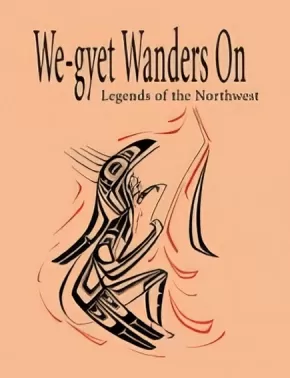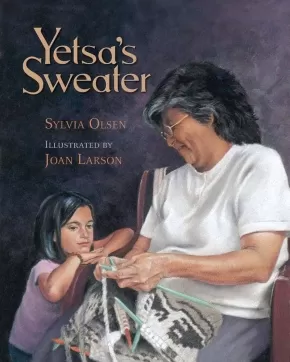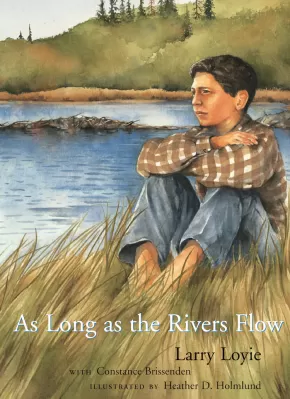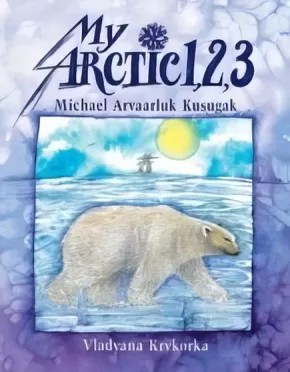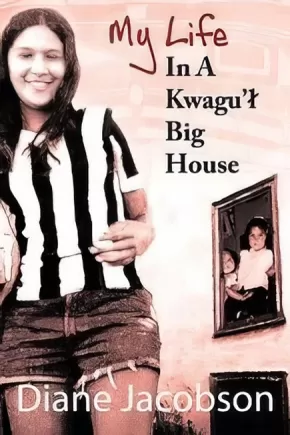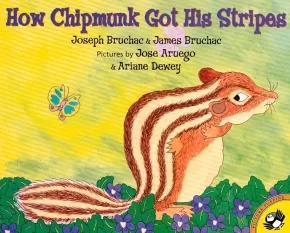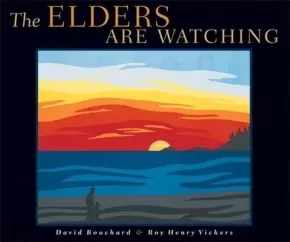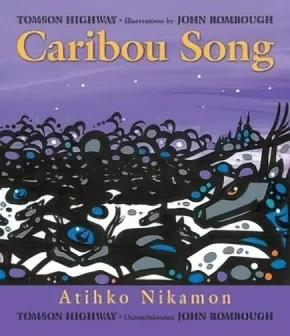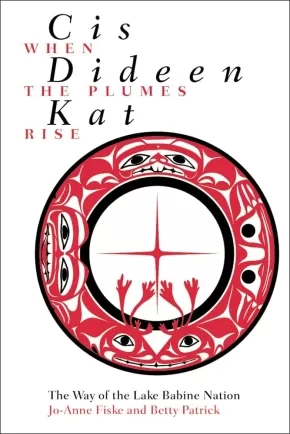
Canadian Indigenous Resource Lists
436
-
450
of
473 Results;
Sort By
Go To
of 32
We-gyet Wanders On
$14.95
Format:
Paperback
Text Content Territories:
Indigenous Canadian; First Nations; Gitxsan (Gitksan);
ISBN / Barcode: 9780888396365
Synopsis:
Synopsis:
The legends collected here are the ancient stories of the people of "Ksan who have lived in northern British Columbia for over six thousand years. We-Gyet is the essence of every man's frailties exaggerated into gentle humour or ribald laughter. His adventures always end in disaster. His blunders and tricks changed the face of the earth, and many of earth's creatures. We-Gyet was a creator - by accident!
Authenticity Note: The contributions of Indigenous peoples to this work is why it contains the Authentic Indigenous Text and Artwork labels.
When The Spirits Dance
$16.95
Format:
Paperback
Text Content Territories:
Indigenous Canadian; First Nations; Cree (Nehiyawak);
ISBN / Barcode: 9781926886022
Synopsis:
Synopsis:
When Lawrence's father goes overseas with the Canadian Army during the Second World War, the young Cree boy struggles to grow up while wrestling with the meaning of war. With Papa gone, Mama raises the children alone. Traditional foods like wild meat and fish are scarce and many other foods are rationed. Angry about the changes and confused about the future, Lawrence misses his father and his teachings about their natural way of life. When army runaways threaten the family, Lawrence's courage and knowledge of traditional skills are called upon to keep them safe. With guidance from his grandfather and encouragement from his grandmother, Lawrence faces his challenges, becoming wiser and stronger, and earning the respect of his elders.
Educator & Series Information
Recommended for grades 4 to 9.
This book is part of The Lawrence Series.
Additional Information
44 pages | 7.75" x 10.54"
Yetsa's Sweater
$12.95
Artists:
Format:
Paperback
Text Content Territories:
Indigenous Canadian; First Nations; Salish; Coast Salish; Cowichan;
ISBN / Barcode: 9781550392029
Synopsis:
Synopsis:
On a fresh spring day, young Yetsa, her mother and her grand-mother gather to prepare the sheep fleeces piled in Grandma's yard. As they clean, wash and dry the fleece, laughter and hard work connect the three generations. The reader joins this family in an old, but vibrant tradition: the creation of a Cowichan sweater.
Additional Information
|
As Long As the Rivers Flow (PB)
$12.99
Artists:
Format:
Paperback
Text Content Territories:
Indigenous Canadian; First Nations; Cree (Nehiyawak);
ISBN / Barcode: 9780888996961
Synopsis:
Synopsis:
In the 1800s, the education of First Nations children was taken on by various churches, in government-sponsored residential schools. Children were forcibly taken from their families in order to erase their traditional languages and cultures.
As Long as the Rivers Flow is the story of Larry Loyie's last summer before entering residential school. It is a time of learning and adventure. He cares for an abandoned baby owl and watches his grandmother make winter moccasins. He helps the family prepare for a hunting and gathering trip.
Sequel: Goodbye Buffalo Bay
Awards
- In 2006, As Long As the Rivers Flow was the award recipient for First Nation Communities Read.
- Winner of the Norma Fleck Award for Canadian Children's Non-Fiction
Educator Information
Recommended for ages 7 to 11.
Curriculum Connections: Indigenous Studies, Social Studies, Science and Nature.
This resource is also available in French: Tant que couleront le rivieres.
Additional Information
48 pages | 7.25" x 10.25"
My Arctic 1,2,3
$9.95
Artists:
Format:
Paperback
Text Content Territories:
Indigenous Canadian; Inuit;
ISBN / Barcode: 9781550375046
Synopsis:
Synopsis:
Readers discover counting and creatures, and learn who's predator and who's prey. They witness five Arctic foxes hunting six furry siksiks. They watch seven fisherman catch eight Arctic char. Numbers explored include 1 to 10, 20, 100 and even 1,000,000 millions of berries ripen in the fall.
Reviews
"From one polar bear walking along the edge of a huge ice floe to millions of berries ready for picking, My Arctic 1, 2, 3 takes young readers on a counting tour in the Far North. With the rich Arctic environment as a background, this classic not only provides small children with opportunities to practice their counting skills, it introduces them to the extraordinary animals that make the Far North their home. Stunning artwork, the author's memories of life in the Arctic and information about many of the featured animals make My Arctic 1, 2, 3 the perfect book for families to share and cherish. You can count on it!" - Parent Council
"A fascinating tale... The book is well thought out, colourful and imaginative, giving us a glimpse of life in the vast Arctic. Recommended."
— Naomi Gerrard, reviewer for Amelia Frances Howard-, Children's Materials, Vol. 3, No. 2, September 1996
"Emerging readers will appreciate the easy-to-read, large print...A unique addition for libraries, particularly those building multicultural or Arctic-region collections." — School Library Journal
Educator Information
Recommended Ages: 4-6.
Numbers are in Inuktitut and English.
Additional Information
24 pages | 8.25" x 10.50"
My Life In A Kwagu'l Big House
$18.95
Format:
Paperback
Text Content Territories:
Indigenous Canadian; First Nations; Kwakwaka'wakw (Kwakiutl); Namgis; Kwagu'l;
ISBN / Barcode: 9781894778206
Synopsis:
Synopsis:
"'Wheee!!' Honey's cousin Phillip Boy was roaring with delight as they whizzed down the stairs on their homemade iron surfboard. Honey could only close her eyes when she saw Grandma Axu at the bottom of the staircase..."
Honey Jacobson considered herself lucky to live in the last semi-traditional Big House of the Kwagu'l people: a four-story home filled with a loving, extended family of cousins, uncles, aunts and the heads of the household, Grandpa Moses and Granny Axu. While new smaller houses were spreading throughout her community, Honey really knew only her relatives inside that Big House.
Capturing the fancy of Honey's community and family, the 1960s saw a Kwagu'l family inevitably changed by Western culture's spell. This is Honey's story.
Additional Information
191 pages | 6.00" x 9.00"
Turtle's Race With Beaver
$12.50
Format:
Paperback
Text Content Territories:
Indigenous American; Native American; Haudenosaunee (Iroquois); Seneca;
ISBN / Barcode: 9780142404669
Synopsis:
Synopsis:
Turtle lives in a beautiful little pond with everything a happy turtle needs. But one spring, Turtle awakes from hibernation to discover that her lovely home has been invaded! A pushy beaver takes over Turtle's beloved pond and refuses to share. Instead, he challenges her to a race to determine who can stay. But how can a little turtle outswim a big, powerful beaver? This charming fable of brains versus brawn is a great read for all the young readers in the forest to share!
Additional Information
32 pages | 10.06" x 8.06" | Paperback
Catching Spring
$7.95
Format:
Paperback
Text Content Territories:
Indigenous Canadian; First Nations; Salish; Coast Salish; Saanich (WSANEC); Tsartlip;
ISBN / Barcode: 9781551432984
Synopsis:
Synopsis:
The year is 1957, and Bobby lives on the Tsartlip First Nation reserve on Vancouver Island where his family has lived for generations and generations. He loves his weekend job at the nearby marina. He loves to play marbles with his friends. And he loves being able to give half his weekly earnings to his mother to eke out the grocery money, but he longs to enter the up-coming fishing derby. With the help of his uncle and Dan from the marina his wish just might come true.
Educator Information
Themes: contest, family, fishing, Indigenous.
Educator & Series Information
This book is part of the Orca Young Readers series, which are award-winning, bestselling chapter books for ages 8–11. Titles in this series include historical and contemporary stories with age-appropriate plots.
Additional Information
128 pages | 5.00" x 7.50"
The Moccasins
$12.95
Artists:
Format:
Paperback
Text Content Territories:
Indigenous Canadian;
ISBN / Barcode: 9781894778145
Synopsis:
Synopsis:
This is an endearing story of a young Aboriginal foster child who is given a special gift by his foster mother. Her gift of warmth and thoughtfulness helps her young foster children by encouraging self-esteem, acceptance and love. Written as a simple story, it speaks of a positive foster experience.
Additional Information
16 pages | 8.00" x 6.00" | Paperback
How Chipmunk Got His Stripes
$12.49
Artists:
Format:
Paperback
Text Content Territories:
Indigenous American; Native American;
ISBN / Barcode: 9780142500217
Synopsis:
Synopsis:
In this retelling of a Native American pourquoi tale, Brown Squirrel challenges prideful Bear to keep the sun from rising.
Bear brags that he can do anything-even stop the sun from rising. Brown Squirrel doesn't believe him, so the two wait all night to see if the sun will rise. Sure enough, the sky reddens and the sun appears. Brown Squirrel is so happy to be right that he teases Bear. What happens when a little brown squirrel teases a big black bear? Brown Squirrel gets stripes and is called chipmunk from that day forward . . . Joseph and James Bruchac join forces to create this buoyant picture book, based on a Native American folktale.
Educator Information
Recommended Ages: 5-8.
Additional Information
32 pages | 8.00" x 10.00"
The Elders Are Watching (2 in Stock)
$21.95
Format:
Hardcover
Text Content Territories:
Indigenous Canadian;
ISBN / Barcode: 9781551926414
Synopsis:
Synopsis:
When award-winning writer David Bouchard first saw the work of First Nations artist Roy Henry Vickers, he was struck by Vickers' reverence for nature and his understanding of Canada's rugged West Coast. They collaborated on The Elders Are Watching, which-now in its fifth printing-has delighted more than 100,000 readers in four languages. The artwork in this new edition has been restored to match the vibrancy of the originals.
The boy looked much the same as the other kids in his class. New faces arrived almost daily from far away places, so it wasn't his appearance that made him different.
He had always tried his hardest, but try as he might, somehow he didn't seem to be able to get excited about the same things his classmates did. This year would be no different.
And so, as in years gone by, his mother would please him greatly by taking him out of school for a time. Again, she was sending him to live with his grandfather, his 'Ya-A' - to listen, to think and to learn.
'Ya-A' would reintroduce him to the Wind, the Tree and the Earth. 'Ya-A' would speak of responsibilities and of rights. 'Ya-A' would fascinate him with legends of the eagle, the whale, the raven and the wolf.
Of all the tales his grandfather told, none captured his heart more than the stories of the Old Ones - the Elders. And as the stories slowly became a part of him, by the seashore in the clear red sky of early evening, he began to see them.
They appeared as images suspended in the air, up toward the sun. Their lips were still, yet he heard them speak. Their message, like the words of his "Ya-A', was clear and true, a message gone too long without being passed to other hearts.
He and his "Ya-A' would share the words of the Elders often with all those who cared to listen - with all those who cared at all. ...taken from The Elders Are Watching.
Additional Information
56 pages | 10.94" x 9.06" | Hardcover
Lessons From Mother Earth
$10.99
Artists:
Format:
Paperback
Text Content Territories:
Indigenous Canadian; First Nations; Tutchone; Northern Tutchone; Na-Cho Nyak Dun;
ISBN / Barcode: 9780888998323
Synopsis:
Synopsis:
This gentle story demonstrates the First Nations' tradition of taking care of Mother Earth.
Tess has visited her grandmother many times without really being aware of the garden. But today when they step out the door, Tess learns that all of nature can be a garden. And if you take care of the plants that are growing, if you learn about them - understanding when they flower, when they give fruit, and when to leave them alone - you will always find something to nourish you.
At the end of the day, Tess is grateful to Mother Earth for having such a lovely garden, and she is thankful for having such a wise grandma.
Elaine McLeod's poetic text and Colleen Wood's gentle watercolors combine to make Lessons from Mother Earth a celebration of nature and life.
Educator Information
Curriculum Connections: Social Studies, Science and Nature.
Additional Information
24 pages | 8.80" x 8.80"
Caribou Song
$14.95
Artists:
Format:
Paperback
Text Content Territories:
Indigenous Canadian; First Nations; Cree (Nehiyawak);
ISBN / Barcode: 9781927083499
Synopsis:
Synopsis:
Joe and Cody are young Cree brothers who follow the caribou all year long, tucked into their dog sled with their Mama and Papa. To entice the wandering herds, Joe plays the Kitoochigan, his accordion, and Cody dances, whirling like a young caribou. They are so busy playing and dancing, they don't hear the rumble of the caribou. Bursting from the forest, ten thousand animals fill the meadow like a lake. Joe is engulfed; he can barely see Cody a few yards away, perched like a doll on the caribou moss. Their parents seem to have disappeared.
And yet what should be a moment of terror turns into something mystical and magical, as the boys open their arms and their hearts to embrace the caribou spirit.
A tale that is perfectly simple and satisfying, yet infused with layers of wonder that will open both children's and adults' minds to the intriguing possibilities of independence, separation and the strength of the spirit, Caribou Song is the first in a three-book series about Joe and Cody.
Reviews
"Caribou Song is a story of family, tradition, spirit, and livelihood. Music weaves the elements together, making them soar just as Highway's words and Rombough's art beautifully and evocatively express a way of life that has slipped (or is slipping) away. Rombough's illustrations in Caribou Song are strongly influenced by the Woodland (or Anishinaabe) School, with its emphasis on dark outlines, vivid colours, and visionary imagery. Founding member Norval Morrisseau's iconic style lives on in Rombough's work, but where they diverge is in the almost effervescent quality of Rombough's paintings. Bubbling with circular imagery and spots of amethyst, sapphire and topaz, framed in black and laid over flat washes of colour, each scene is like a pane of stained glass; a mix of storytelling and spirituality that is simply magnificent." — 32pages.ca
"Tomson Highway's mastery creates an exciting, action-packed plot. Elements of suspense simultaneously entertain beauty, magic, and whimsy. Highway artfully crafts his scenes with the vivid river imagery capturing the full drama of the caribou's presence - the sound of their hooves beating on the earth like the pounding of drums. Caribou Song is an experience for the senses. — CM Magazine
Educator & Series Information
Written in English with Cree translations.
This is the first book in the Songs of the North Wind series.
This book is available in French/Cree: Le chant des caribous/Ateek Oonagamoon
Additional Information
32 pages | 9.00" x 10.50"
Cis Dideen Kat (When the Plumes Rise): The Way of the Lake Babine Nation (3 in Stock)
$32.95
Format:
Paperback
Text Content Territories:
Indigenous Canadian; First Nations; Nat'oot'en (Lake Babine);
Grade Levels: 12; University/College;
ISBN / Barcode: 9780774808125
Synopsis:
Synopsis:
The heart of the traditional legal order of the Lake Babine Nation of north-central British Columbia is the grand ceremonial feast known as the balhats, or potlatch. Misunderstood and widely condemned as a wasteful display of pride, the balhats ceremonies were outlawed by the Canadian government in the late nineteenth century. Throughout the years that followed, the Lake Babine Nation struggled to adapt their laws to a changing society while maintaining their cultural identity.
Although the widespread feasting and exchange practices of the balhats have attracted continuous academic and political interest since the nineteenth century, little consideration has been given to understanding the legal practices embedded within the ceremonies. Cis dideen kat, the only book ever written about the Lake Babine Nation, describes the customary legal practices that constitute "the way."
Authors Jo-Anne Fiske and Betty Patrick use historical and contemporary data to create a background against which the changing relations between the Lake Babine Nation and the Canadian state are displayed and defined, leading to the current era of treaty negotiations and Aboriginal self-government.
Through interviews with community chiefs and elders, oral histories, focus groups, and archival research, Fiske and Patrick have documented and defined a traditional legal system still very much misunderstood. Their findings include material not previously published, making this book essential reading for those involved in treaty negotiations as well as for those with an interest in Aboriginal and state relations generally.
Cis dideen kat was shortlisted for the 2001-2002 Harold Adams Innis Prize.
How Raven Stole the Sun (Tales of the People)
$21.95
Artists:
Format:
Hardcover
Text Content Territories:
Indigenous American; Alaska Native; Tlingit;
ISBN / Barcode: 9780789201638
Synopsis:
Synopsis:
A long time ago, Raven was pure white, like fresh snow in winter. This was so long ago that the only light came from campfires, because a greedy chief kept the stars, moon, and sun locked up in elaborately carved boxes. Determined to free them, the shape-shifting Raven resourcefully transformed himself into the chief's baby grandson and cleverly tricked him into opening the boxes and releasing the starlight and moonlight. Though tired of being stuck in human form, Raven maintained his disguise until he got the chief to open the box with the sun and flood the world with daylight, at which point he gleefully transformed himself back into a raven. When the furious chief locked him in the house, Raven was forced to escape through the small smokehole at the top--and that's why ravens are now black as smoke instead of white as snow.
This engaging Tlingit story is brought to life in painted illustrations that convey a sense of the traditional life of the Northwest Coast peoples.
Additional Information
32 pages | 9.50" x 9.60"
Sort By
Go To
of 32

